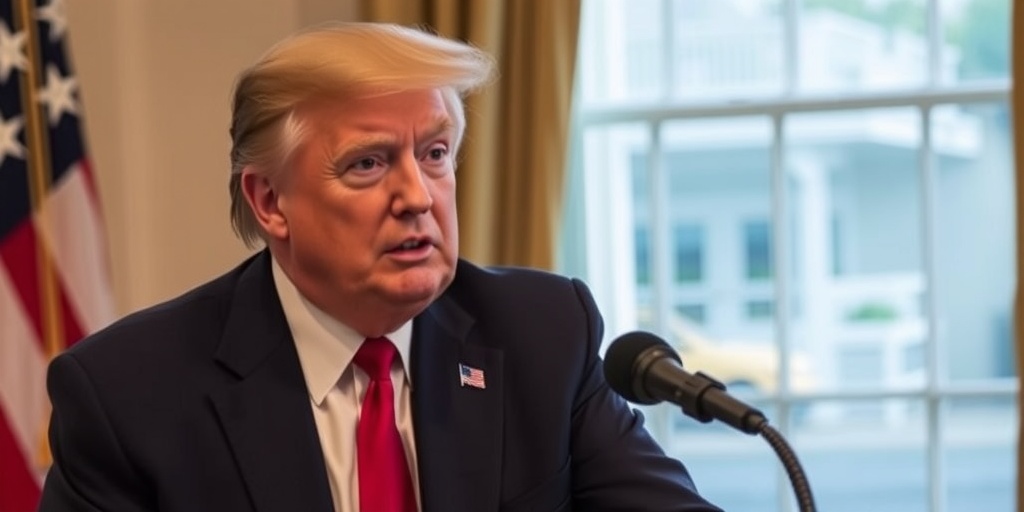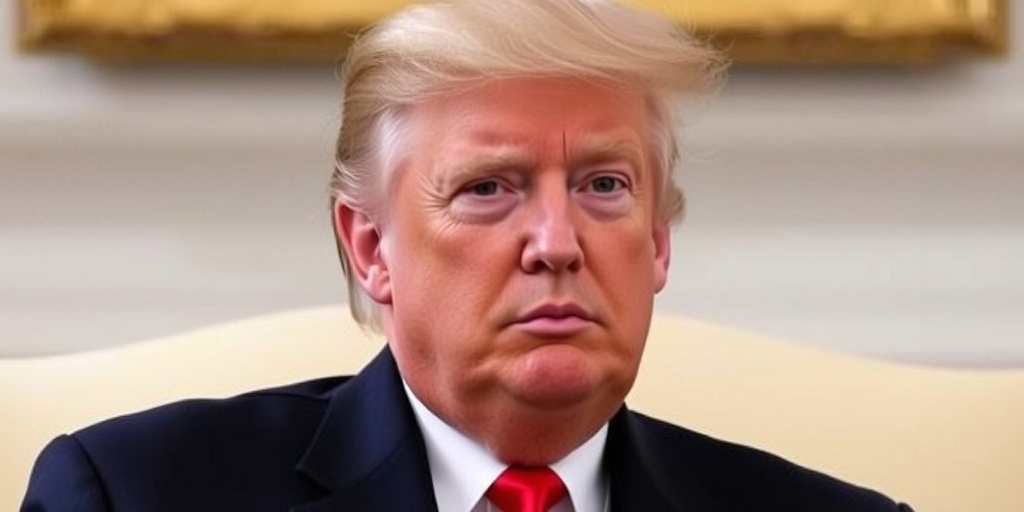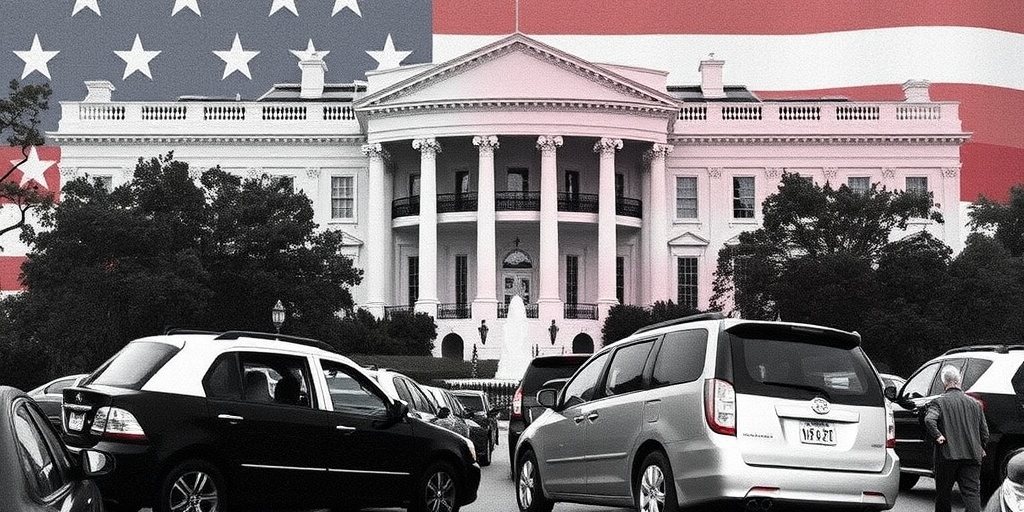Now Reading: Trump’s Executive Orders Shape Fed’s Future
-
01
Trump’s Executive Orders Shape Fed’s Future
Trump’s Executive Orders Shape Fed’s Future
Title: The Federal Reserve’s Adaptation to Trump’s Executive Orders
In recent developments surrounding the Federal Reserve (Fed) during President Trump’s second term, the central bank has shown a notable response to the executive orders issued by the administration. While historically protective of its independence, the Fed’s recent actions suggest a willingness to align certain operational decisions with the directives from the executive branch, raising questions about the balance between independence and compliance.
One of the most significant changes was the Fed’s announcement to implement a hiring freeze for permanent positions. This decision followed Trump’s government-wide mandate that froze hiring across federal agencies, with few exceptions for roles related to military personnel, national security, and immigration enforcement. Consequently, the Fed removed all job postings from its website, leaving only one summer internship opportunity available.
The Fed is legally an independent body, meaning it typically does not have to adhere to executive orders. However, the central bank’s choice to pause hiring aligns with a broader strategy: it seeks to collaborate with the executive branch when it deems appropriate while simultaneously safeguarding its monetary policy independence. This careful approach reflects a pivot toward pragmatism as the Fed navigates its operations under the current administration.
Historically, the Fed has been known to zealously protect its autonomy, a sentiment echoed by Jeremy Kress, a former Fed banking regulator and now co-faculty director at the University of Michigan’s Center on Finance, Law & Policy. Kress noted that the Fed is attempting to delineate boundaries regarding executive influence, showing its intention to retain independence even in these tumultuous times.
Fed Chair Jerome H. Powell addressed some of these changes in a recent news conference, discussing whether the central bank maintained its commitment to diversity, equity, and inclusion initiatives after Trump mandated a halt to such activities within federal agencies. Powell responded by affirming the Fed’s longstanding practice of aligning its policies with executive orders as deemed appropriate and in accordance with the law.
In line with this strategy, the Fed has removed a "Diversity and Inclusion" section from its website, which previously showcased its efforts to promote equal employment opportunity and diversity. The regional Federal Reserve banks have mirrored this shift, indicating a consistent approach to the executive order across the institution.
The Fed’s decision to comply with the executive order on hiring reflects a similar stance taken by former Chair Janet L. Yellen during Trump’s first term. In 2017, Yellen’s Fed voluntarily adhered to a temporary hiring freeze and a request from the Office of Management and Budget to enhance agency efficiency. This precedent establishes a pattern of cooperation with presidential directives when they align with the Fed’s operational considerations.
In addition to hiring practices, Trump’s administration has had repercussions on the Fed’s engagement with climate-related initiatives. Recently, the Federal Reserve Bank of New York announced its withdrawal from co-sponsoring a conference with New York University’s Stern School of Business focusing on the economic impacts of climate migration. The San Francisco Fed also canceled a series of virtual seminars on climate economics, illustrating a marked reduction in emphasis on climate-related research within the institution.
Concerns have been raised among economists regarding the shift in focus away from climate economics, as many researchers now perceive that prioritizing such topics would be ill-advised under the current administration. The Fed, which previously exited an international group dedicated to climate-related risks in the financial sector, continues to balance its commitment to mitigating financial risks against the perceived disconnect between climate discussions and its core mandate.
Further complicating the regulatory landscape, Michael Barr, the Fed’s vice chair for supervision, recently announced his decision to step down to avoid potential legal conflicts with Trump. This decision underscores the tension between administration directives and the Fed’s regulatory independence.
Despite these various changes, the Fed has demonstrated hesitance in following certain other directives from the executive branch. For instance, it resisted an order from President Biden to bolster oversight of bank mergers, citing its existing robust processes as sufficient.
These cumulative decisions have sparked discussions among experts regarding the Fed’s selective compliance with presidential orders while maintaining independence in monetary policy. Former senior adviser at the San Francisco Fed, Glenn Rudebusch, noted that the central bank is willing to make concessions in other areas to preserve its authority over interest rate decisions, underscoring the Fed’s commitment to safeguarding its core functions amid political pressures.
In summary, the Federal Reserve’s recent decisions reflect a nuanced approach to its operations during Trump’s second term. Balancing compliance with executive orders while striving to maintain its independence presents ongoing challenges for the central bank as it navigates an increasingly complex political environment.
Stay Informed With the Latest & Most Important News
Previous Post
Next Post
-
 01New technology breakthrough has everyone talking right now
01New technology breakthrough has everyone talking right now -
 02Unbelievable life hack everyone needs to try today
02Unbelievable life hack everyone needs to try today -
 03Fascinating discovery found buried deep beneath the ocean
03Fascinating discovery found buried deep beneath the ocean -
 04Man invents genius device that solves everyday problems
04Man invents genius device that solves everyday problems -
 05Shocking discovery that changes what we know forever
05Shocking discovery that changes what we know forever -
 06Internet goes wild over celebrity’s unexpected fashion choice
06Internet goes wild over celebrity’s unexpected fashion choice -
 07Rare animal sighting stuns scientists and wildlife lovers
07Rare animal sighting stuns scientists and wildlife lovers




















